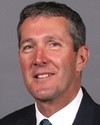Science centres are, by definition, investments in youth, in the role youth will play later, in the family and the influence it has on the role that young people play later on in life. They're also an investment for teachers, so they feel comfortable doing science at the primary and secondary levels throughout their lives, because they have trouble doing it. They also make it possible to let young people know what our businesses are doing and to encourage them to be inspired by them so that they too can one day create businesses and wealth.
The aproach to wealth isn't opposed to the approach to poverty. We need the former to address the latter, not to create poverty, but in order to establish social programs. I have to be careful of what I say, because I don't want to get into a dispute. I simply mean that it's like the left brain and the right brain. We need wealth creation so that our social programs are up to our values and needs. It's a response by one and the other. We have to address both.
A science centre is a place where you run, jump and play. You go there as a family, it's fun, you don't feel judged, you don't feel you're not good in science. You feel comfortable learning about everything that's being done and about opening up to wonderful things. It's a solution to problems we experience. For example, we know that one in two boys doesn't finish high school in five years and that one in five boys doesn't finish at all.
The demographic situation doesn't allow us to lose a single young person. And yet, we lose 20% of them. These young people who don't have high school diplomas won't be going to university. We can't afford that. We have to inspire young people and make an effort to prevent the social problem and needs from increasing. We have to be able to respond to those needs.




